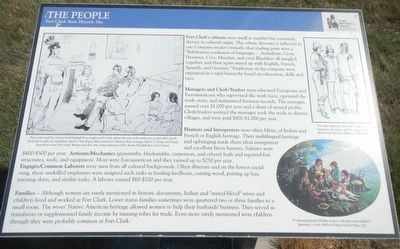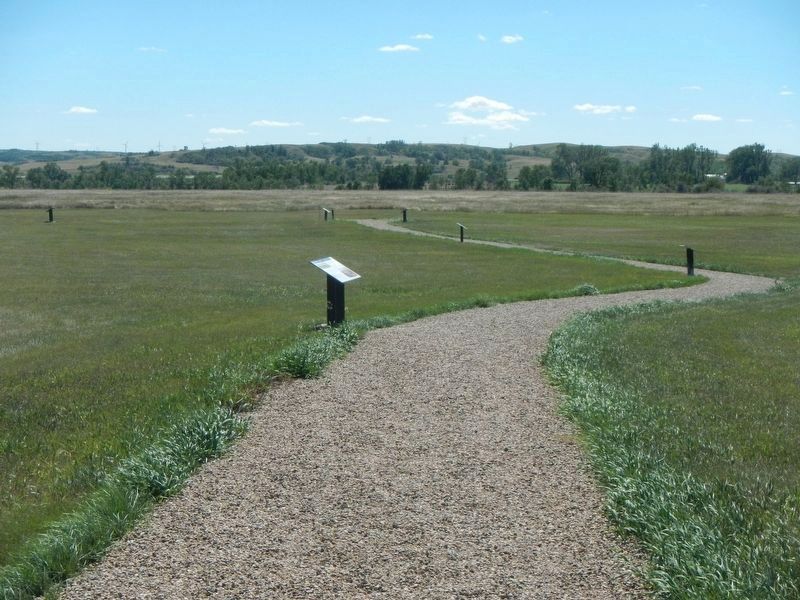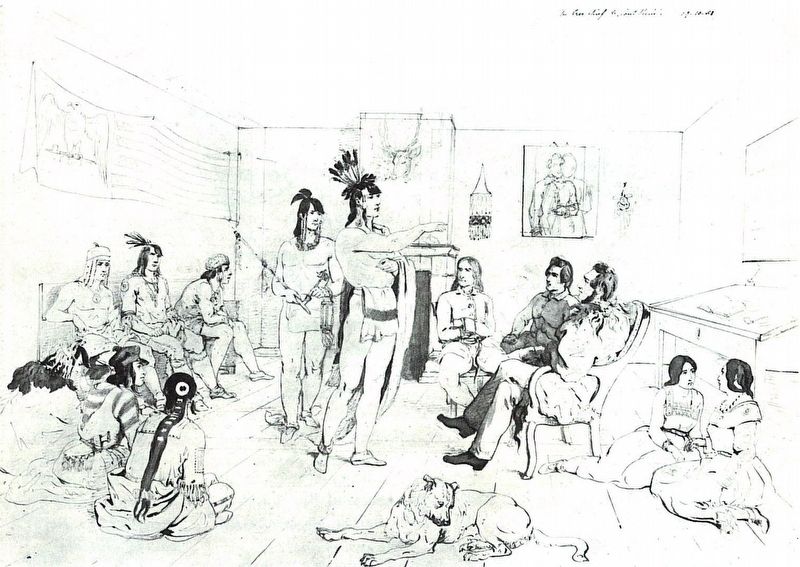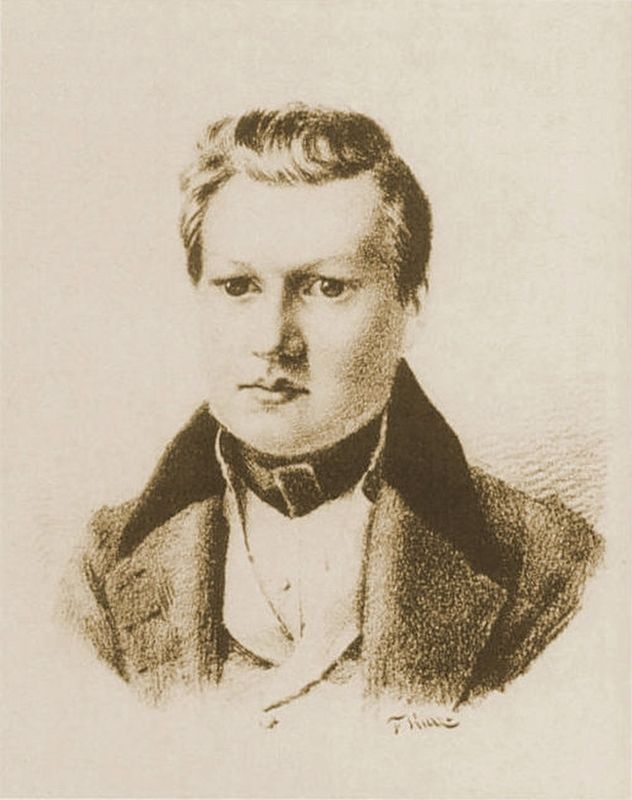Near Stanton in Mercer County, North Dakota — The American Midwest (Upper Plains)
The People
Fort Clark State Historic Site

Photographed By Barry Swackhamer, August 28, 2020
1. The People Marker
Captions: (upper left) Swiss artist and Fort Union clerk Rudolph Kurz caught much of the ethnic diversity as fur trade posts in this 1851 sketch. From left to right are Assiniboin chief Le Tout Piqué, Métis interpreter Barriste, Kurz, manager Edwin T. Denig's Assiniboin wives Deer Little Woman and first wife, name unknown (1851 sketch, Rudolph Kurz, Fort Union); (upper right) Fur trade employees. From left to right, the interpreter, the trader, and the engagé. (1851 sketch, Rudolph Kurz, Bellevue, Nebraska); (bottom right) "A charming group of Indian women with their metis children" (painting ca. early 1840s by Father Nicolas Point, J.S.)
Managers and Clerk/Traders were educated Europeans and Euroamericans who supervised the work force, operated the trade store, and maintained business records. The manager, earned over $1,000 per year and a share of annual profits. Clerk/traders assisted the manager, took the trade to distant villages, and per paid $800-$1,000 per year.
Hunter and Interpreters were often Métis, of Indian and French or English heritage. Their multilingual heritage and upbringing made them ideal interpreters and excellent bison hunters. Salaries were $400-$500 per year. Artisans/Mechanics (gunsmiths, blacksmiths, carpenters, and others) built and repaired fort structures, tools, and equipment. Most were Euroamerican and they earned up to $250 per year. Engagés/Common Laborers were men of all cultural backgrounds. Often illiterate and on the lowest social rung, these unskilled employees were assigned such tasks as hauling keelboats, cutting wood, putting up hay, pressing skins, and similar tasks. A laborer earned $60-$200 per year.
Families - Although women are rarely mentioned in historic documents, Indian and "mixed-blood wives and children lived and worked at Fort Clark. Lower status families sometimes were quartered two or three families to a small rooms. The wives' Native American heritage allowed women to help their husband's business. They served as translators or supplemental family income by tanning robes for trade. Even more rarely mentioned were children through they were probably common at Fort Clark.
Erected by State Historical Society of North Dakota.
Topics. This historical marker is listed in these topic lists: Forts and Castles • Industry & Commerce.
Location. 47° 15.083′ N, 101° 16.356′ W. Marker is near Stanton, North Dakota, in Mercer County. Marker can be reached from 37th Avenue Southwest near 12th Street Southwest (State Highway 200), on the right when traveling north. The marker is located at the Fort Clark State Historic Site. Touch for map. Marker is in this post office area: Stanton ND 58571, United States of America. Touch for directions.
Other nearby markers. At least 8 other markers are within walking distance of this marker. Fort Clark (circa 1830-1860) (here, next to this marker); Missouri Valley Environs
(within shouting distance of this marker); Pierre Garreau's Lodge (within shouting distance of this marker); Winter Villages and Lodges (within shouting distance of this marker); Stone Shelter (within shouting distance of this marker); Geophysics and Archaeology (about 300 feet away, measured in a direct line); The Blockhouses (about 300 feet away); Two Bourgeois or Head Traders of the Fort (about 300 feet away). Touch for a list and map of all markers in Stanton.
Also see . . . Rudolf Friedrich Kurz -- Wikipedia. Rudolph Friedrich Kurz (1818–1871) was a Swiss painter and writer who ventured to United States in order to paint and study the native Americans. He is mostly known on account of his journals, in which he presents an account of and an interesting commentary on life in the mid-19th century along the Mississippi and Missouri. (Submitted on December 12, 2020, by Barry Swackhamer of Brentwood, California.)
Credits. This page was last revised on December 12, 2020. It was originally submitted on December 12, 2020, by Barry Swackhamer of Brentwood, California. This page has been viewed 102 times since then and 5 times this year. Photos: 1, 2, 3, 4. submitted on December 12, 2020, by Barry Swackhamer of Brentwood, California.


